West Tampa is one such neighborhood, rich in texture and history. But development pressures are squeezing it. Trees have been uprooted to make room for townhomes designed with little regard for the character of the neighborhood’s signature casitas. The rhythm of the street has been disrupted by garages and a pervasive shade of beige.
Even as West Tampa begins to feel its own strength after decades of neglect, motorists still breeze by on I-275 or speed through on its one-way streets, Howard and Armenia, not knowing of the special place they’re passing through.
The West Tampa Chamber of Commerce says the neighborhood ranges from Kennedy Boulevard to the south, the Hillsborough River to the east, Hillsborough Avenue to the north and Dale Mabry to the west.
Guido Maniscalco, a citywide Tampa City Council member knows this area to his core. As a third generation West Tampeño, he passionately protects the identity of his neighborhood. “The giant water tower emblazoned ‘West Tampa’ plants a flag for this community and Midtown, the recent dense development with shops, restaurants and hotels, is a part of it,” Maniscalco told Creative Loafing Tampa Bay.
Other named portions include Armory Gardens, North Hyde Park, and West Tampa Heights. Los Cien—or “The Hundred,” a neighborhood named for a mutual aid society that created housing for club members—is also within West Tampa’s borders. Those borders grew out of the vision of a savvy businessman and lawyer who saw V.M. Ybor’s success in Ybor City and decided to copy his formula.
In 1892, Hugh MacFarlane purchased 200 acres of swampy land on the west side of the Hillsborough River and proceeded to develop it, platting streets, subdividing land and building the first bridge across the river. He moved quickly and by 1895 more than 2,000 immigrants moved there.
Cleverly, he donated land to cigar manufacturers who built their factories and then casitas for the cigar workers or tabaqueros. Commercial buildings followed along with shops and schools. Several of the mutual aid societies from Ybor City also constructed grand club houses in West Tampa; the gloriously elaborate Centro Español de West Tampa and the Sicilian Club still stand today. These mutual aid societies formed the center of the workers’ social lives.
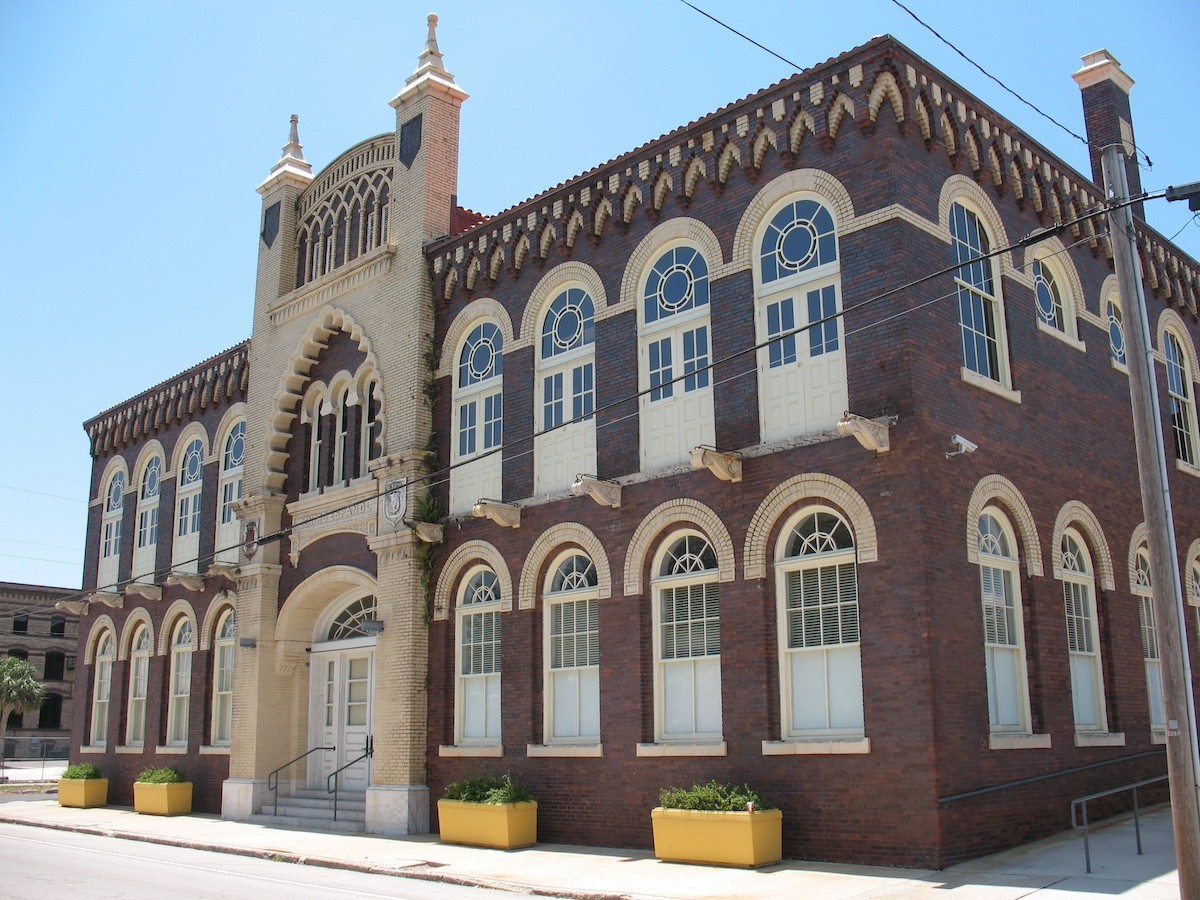
Photo via George Lansing Taylor Jr., University of North Florida
West Tampa's gloriously elaborate Centro Español still stands today, a reminder of mutual aid societies that were at the center of workers’ social lives.
MacFarlane developed a streetcar line which connected West Tampa to the rest of the city and most of the families used that for transportation because the system was quite robust, with 56 miles of tracks, until it was shuttered in 1946. He donated 40 acres of land to create “MacFarlane Park” for the community and in 1912 cajoled a fellow Scot, Andrew Carnegie, to donate funds for the construction of the West Tampa Library we know today.
As word spread about the availability of work in West Tampa, immigrants moved to West Tampa from Cuba, Spain and Sicily seeking employment in the cigar factories and developing very distinct cultural connections. The demographics were definitely majority-minority and still are Spanish-speaking, but the countries of origin changed. In 1930, half of the population hailed from Spain and Cuba and by the ‘80s, from Venezuela, Mexico, Puerto Rico and Central America.
MacFarlane incorporated West Tampa as a city early on and resisted the incorporation of his area in the City of Tampa until 1924. By the time the City of Tampa annexed West Tampa, the politics of the City were fraught with ethnic divisions. The City was divided into four wards, simplistically, North Tampa, South Tampa, East Tampa and West Tampa.
The makeup of the North and South quadrants was basically white people, while East and West was a mixto: Cuban, Spanish, and Black.
Those power struggles were regularly covered at The Tampa Tribune, the city’s mainstream newspaper, where biases slanted towards the “Downtown Boys” including Hugh MacFarlane and the owners of the cigar factories in both East and West Tampa. Meanwhile, the Spanish speaking community was served by dozens of newspapers with a pro-labor bent including La Gaceta which is tri-lingual and still in business today.
The factory owners lived in other areas, so West Tampa was solidly a working class area with the Black community clustered closer to the eastern shore of the river. Madame Fortune Taylor was a freed slave who moved to Tampa after the Civil War. She and her husband, Benjamin, owned 30 acres of land west of downtown Tampa. Taylor was a successful business person when the double whammy of racism and sexism stacked the odds against her. When MacFarlane wanted to develop his property and build his bridge, he purchased the land from her.
The 1920s were a boom time for West Tampa as cigar-smoking peaked in popularity. The 1930s were dismal as the Great Depression and the rising popularity of cigarettes caused the cigar economy to tumble. The large, red brick cigar factory buildings which dominated the skyline were sometimes converted to other manufacturing uses, such as garment factories, and continued to provide employment for the locals.
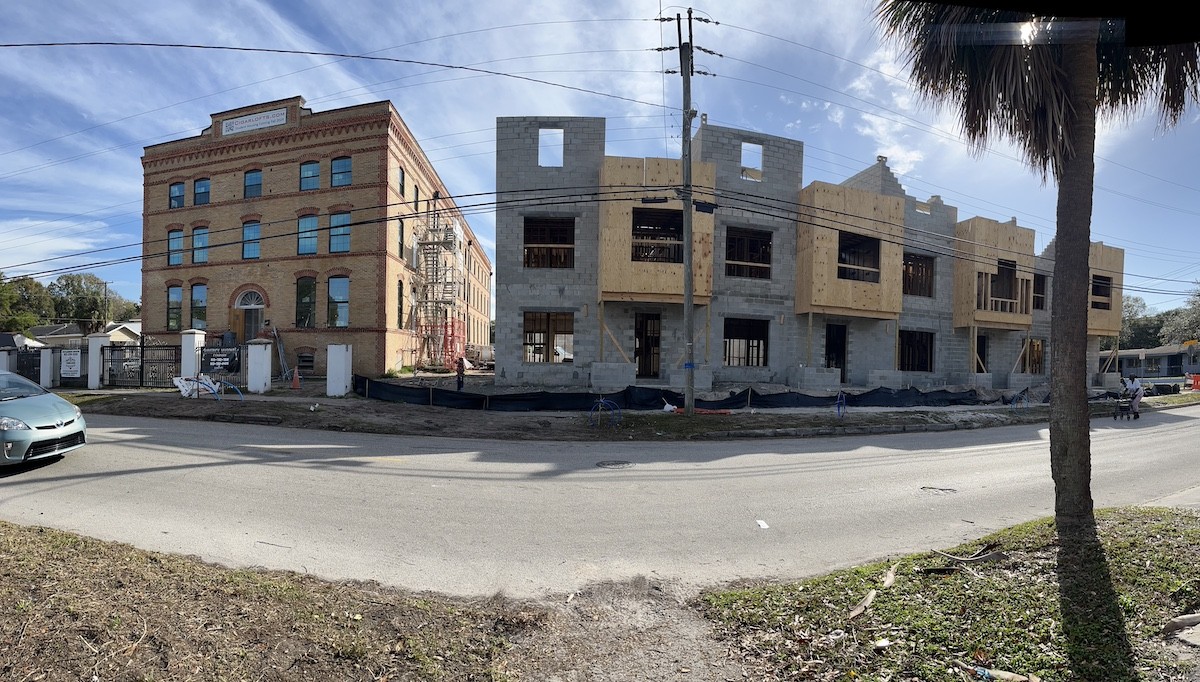
Photo by Linda Saul-Sena
Townhomes under construction next to historic cigar factories in West Tampa.
The emergence of Tampa as a base for military training was a shot in the arm for the economy. Drew Field, MacDill Air Force Base and Henderson Air Field flooded Tampa with young men who came here to train for WWII. Many were charmed and returned here after the war to live. Florida’s roller coaster of prosperity started its long ascent in the 1950s, and West Tampa remained relatively stable.
After Kennedy’s assassination, which took place four days after his visit to Tampa, Lyndon B. Johnson embarked on a round of Great Society legislation aimed at improving poverty in America. LBJ’s aims were lofty, but unfortunately, much of Ybor City was demolished as the reality of the Urban Renewal program was manifest as Urban Removal.
Many former residents of Ybor City moved to West Tampa as their homes were demolished.
In the ‘60s, construction of I-275 through the center of West Tampa created a terrible loss of houses and shops, as social and cultural ties were severed. Suddenly, families and friends who’d lived a block away for decades now were forced to walk a half-mile around a new Maginot Line just to see each other.
The second and third generations of the original West Tampeños, better educated and more prosperous, started moving north to build new concrete block ranch style houses to replace the original wooden casitas. The membership of the Centro Español and the Sicilian Club eroded.
In 1944, the federal government underwrote the construction of public housing, North Boulevard Homes, on 44 acres with 2,000 residents. The good news is that these 820 small apartments provided much needed shelter, the bad news is that they were never air-conditioned—and eventually torn down in 2017. Over the decades, maintenance was deferred and the tight-knit community suffered along with the commercial areas along Main Street and Howard Avenue, the 100% corner—or heart—of West Tampa.
The businesses along these busy streets showed the evolution of the neighborhood as stores with Black, white and Latin owners stood side by side.
Moses White’s Deluxe Cozy Corner was a neighborhood favorite, featuring barbecue and hot dogs (three for a quarter). He was a civic leader who helped broker peace in the 1960s when the tensions between the Black and white communities rose.
While their businesses were next to each other, Black families lived on the eastern side of West Tampa, adjacent to the river. Their affluent homes were centered on Cypress Street near the politically powerful Beulah Baptist Church. Blake High School, Stewart Middle School and Just Elementary School, all segregated until the late 1960s hugged the river, adjacent to the North Boulevard Homes.
The Latin community—Italians, Cubans, Spaniards—was centered on Howard Avenue and gravitated west and north, with the grocery stores and restaurants highlighting Cuban food. The stretch of Columbus Drive between the river and Dale Mabry is known as “Boliche Boulevard” for the Cuban specialty.
As the decades moved along, West Tampa remained static, with little new investment. In 1975, the Tampa Community Design Center, under the leadership of the late Jan Abell, did a facade improvement study for Howard Avenue and a plan to stabilize the Centro Español.
While other parts of Tampa were experiencing new investment, West Tampa was dormant. Despite the leadership from the Tampa Housing Authority, Phil Alessi, Bernie Cimino, Rick Caldevilla and others, the Black and Latin community leaders couldn’t agree on the direction of the plan and nothing changed.
In 2006, Mayor Pam Iorio cut the ribbon on three new casitas which shared the architectural characteristics of the neighborhood-steps leading to a columned front porch, Victorian flourishes at the slanted roof’s apex and narrow, long structures.
Senoia Brantley, who grew up in the Grant Park neighborhood of Atlanta and Savannah gravitated to this walkable, shady neighborhood, purchasing a casita. “I love West Tampa and I’m excited about the boutique hotel and Publix slated for my neighborhood,” she told CL.
Brantley has created”Geechee Secret Garden” next to her home and it feels like it’s been there forever.
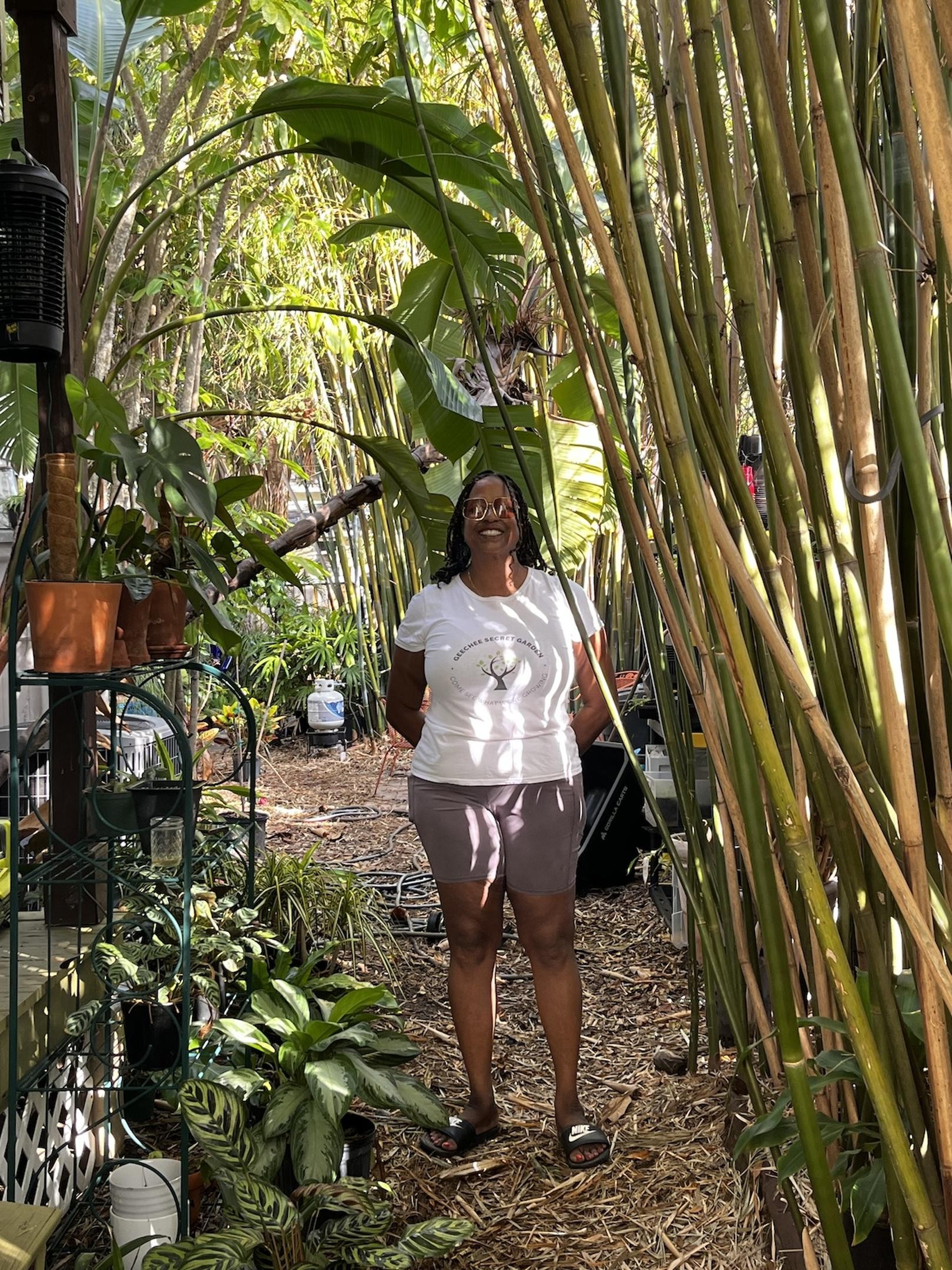
Photo by Linda Saul-Sena
Senoia Brantley has created 'Geechee Secret Garden' next to her West Tampa home and it feels like it’s been there forever.
When the housing authority and Mayor Bob Buckhorn started courting developers to replace North Boulevard Homes with market rate housing, investors began to pay more attention to West Tampa. The demolition and construction has taken almost a decade and the recent private investment along Main Street and Howard Avenue reflects the optimism about the spending habits of hundreds of new residents.
Joe Robinson, past chair of the Community Redevelopment Agency’s Advisory Committee, has been a passionate West Tampa advocate for decades. He shared the ambitious list of City of Tampa projects slated for the area, including the improvement of the alleys and the complete refurbishment of Rey Park.
Even the nearby University of Tampa has been supporting off-campus student housing in West Tampa. The dramatic increase in apartments around Willow and Fig Streets is a shift from the industrial uses which used to sit by the railroad tracks there.
Nate Siegel, co-owner of Willa’s, a hip restaurant in this area is very pleased with his location. “I’m actually interested in starting another place on Main Street,” he told CL.
While a shooting on Main Street in the spring of 2023, cooled enthusiasm for a few months, preservation and rehabilitation projects on Howard and Main Street are now forging ahead.
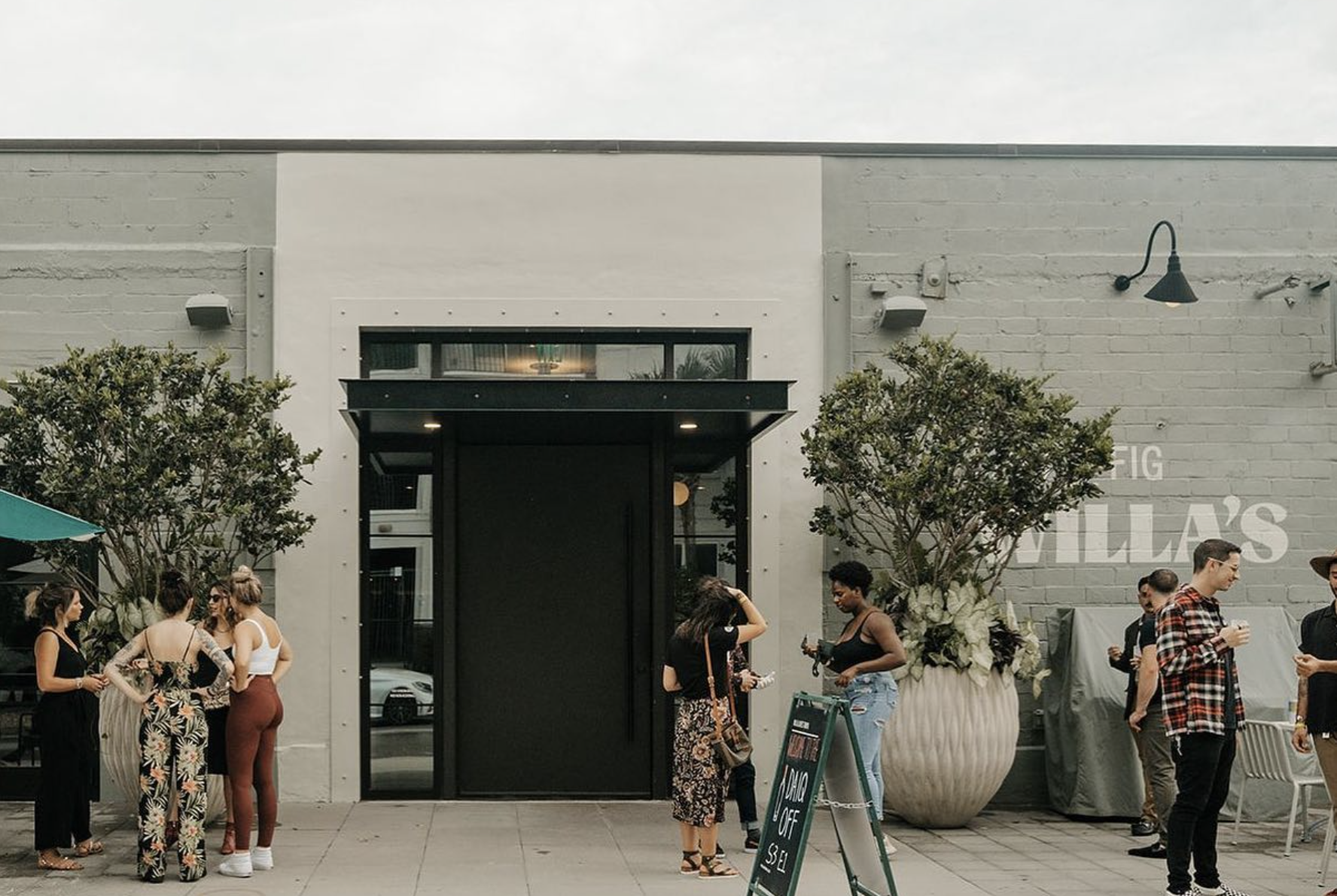
Photo via willalovestampa / Facebook
Nate Siegel, the owner of Willa’s says he's also interested in opening a new concept on Main Street in West Tampa.
University of South Professor of Architecture, Professor Adrianna Pablos Llonos has selected the Centro Español building, which is owned by the City of Tampa and currently used by the Hillsborough Education Foundation, as the focus of their Design Lab. The class toured the building and West Tampa led by Manny Leto, a local historian and Director of Preserve the ‘Burg in St. Petersburg, whose local ties are deep.
“We need an assessment of our historic fabric that’s still intact and protection and incentives to preserve the cigar factories, houses and shops which remain,” Leto told the tour.
Jeanette Fenton, the President of the West Tampa Chamber of Commerce, has chosen the theme of “Prosperity and Preservation” for the organization.
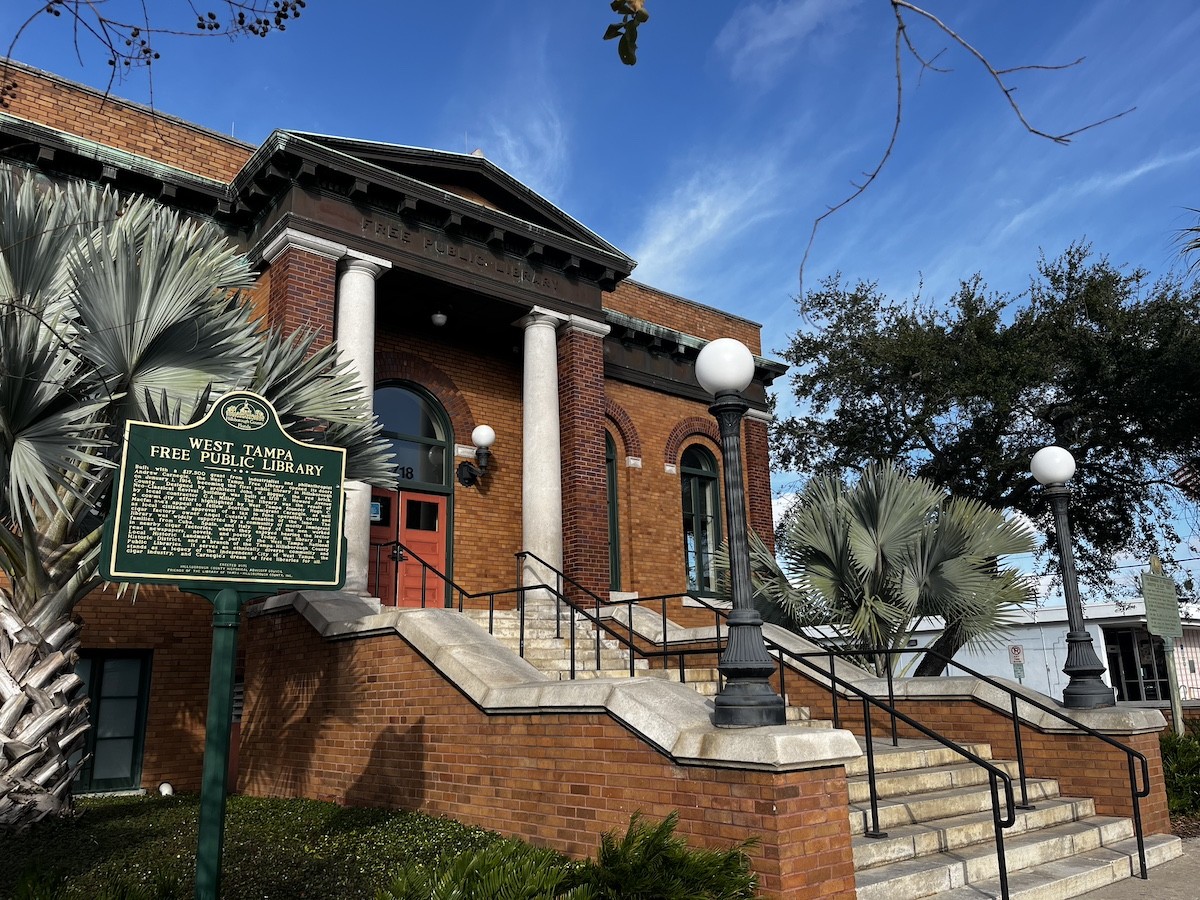
In 1912, Hugh MacFarlane cajoled Andrew Carnegie to donate funds for the construction of the West Tampa Library we know today.
A game changer for West Tampa was the transformation of the historic Fort Homer Hesterly Armory into the Bryan Glazer Family Jewish Community Center in 2016. David Scher became a committee of one as he identified the opportunity and negotiated a deal with the quartermaster of the National Guard to split the site and rehabilitate the structure into a gathering place which attracted people from all over south Tampa with the activities and programs offered there.
Hamilton Jones has been a preservation hero for his careful restoration of the Palace of Florence on Davis Islands as well as buildings throughout south Tampa. Fortunately, he has taken up the challenge of restoring MacFarlane’s original law office building on Howard Avenue.
Jones replaced the roof, repointed the brick, replaced the windows and doors and floors. He mused, “I’ve driven through and seen this building forever. Now I’ve bought it and I’m doing it the right way. Once you restore one, it can be a catalyst for the whole neighborhood.”
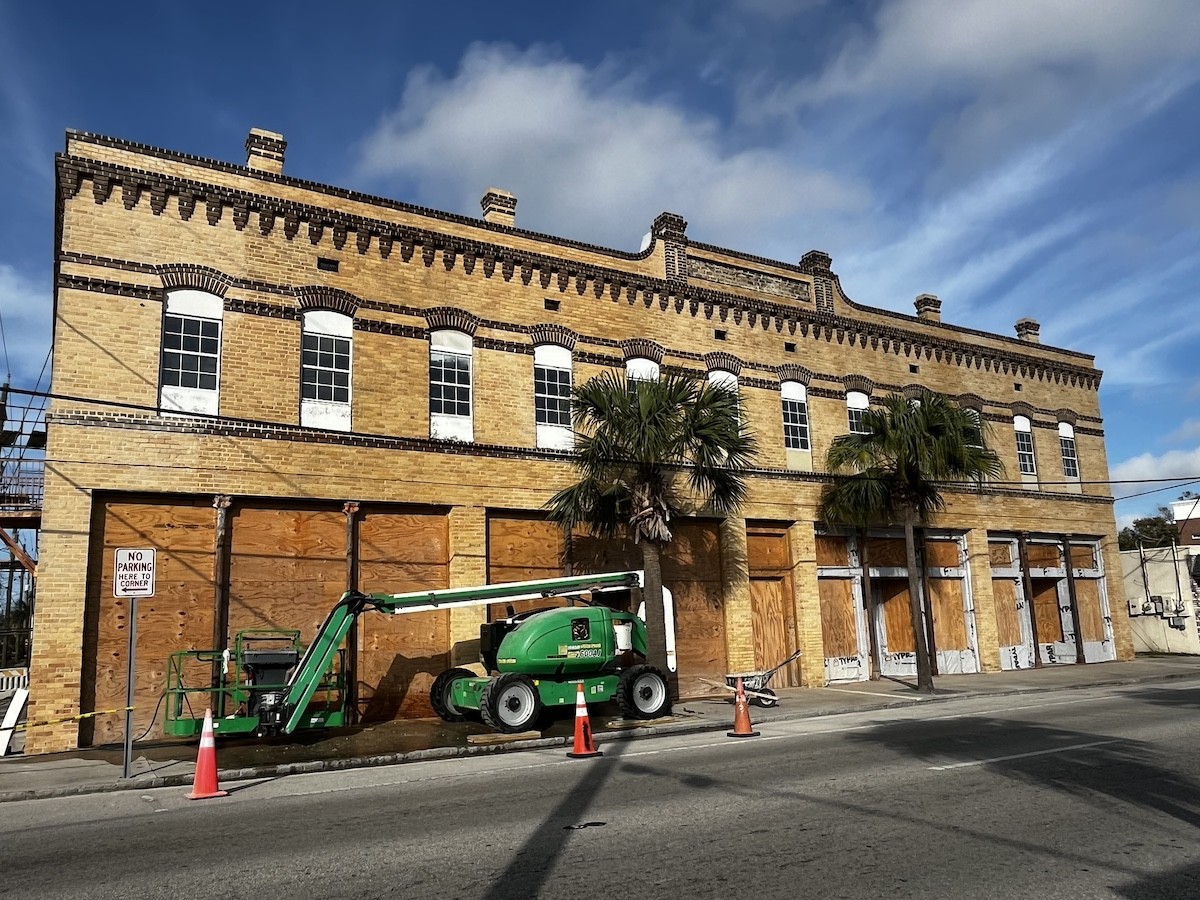
Photo by Linda Saul-Sena
Hamilton Jones has taken up the challenge of restoring MacFarlane’s original law office building.
Jones got a boost from his Community Redevelopment Agency’s restorations fund. West Tampa’s CRA has nearly-$20 million in its coffers. That money could go a long way toward improving the alleys, planting trees, low-cost loans to individual property owners for maintaining their historic facades and eventually creating a community cultural center in the Centro Espanol.
Adrienne Garcia, the Chamber’s past president observed, “I don’t want to see West Tampa grow rapidly, without direction. I am optimistic that by raising awareness of this area’s potential and gathering resources we’ll successfully stabilize the characteristics, brick streets, casitas, cigar factories, tree canopy, cemeteries and clubs, which make us distinctive.”
Linda Saul-Sena served on Tampa City Council on and off between 1987-2010.
UPDATED 02/02/24 9:37 a.m. Corrected to say that Nate Siegel is the co-owner of Willa's.

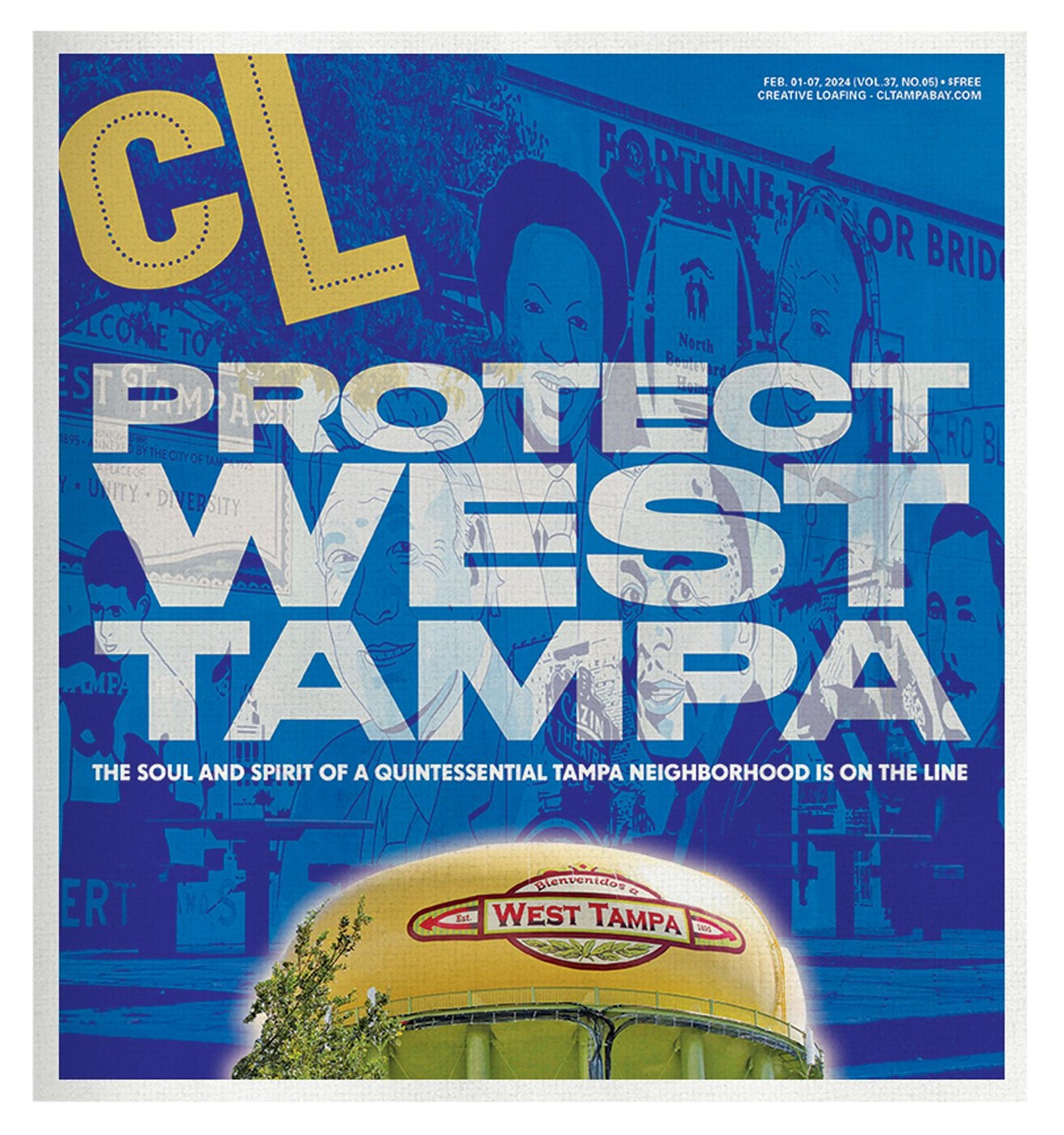
!['Protect West Tampa': The spirit of a quintessential Tampa neighborhood is on the line [COLUMN]](https://media2.cltampa.com/cltampa/imager/u/blog/17180519/west_tampa_mural.jpeg?cb=1706803014)
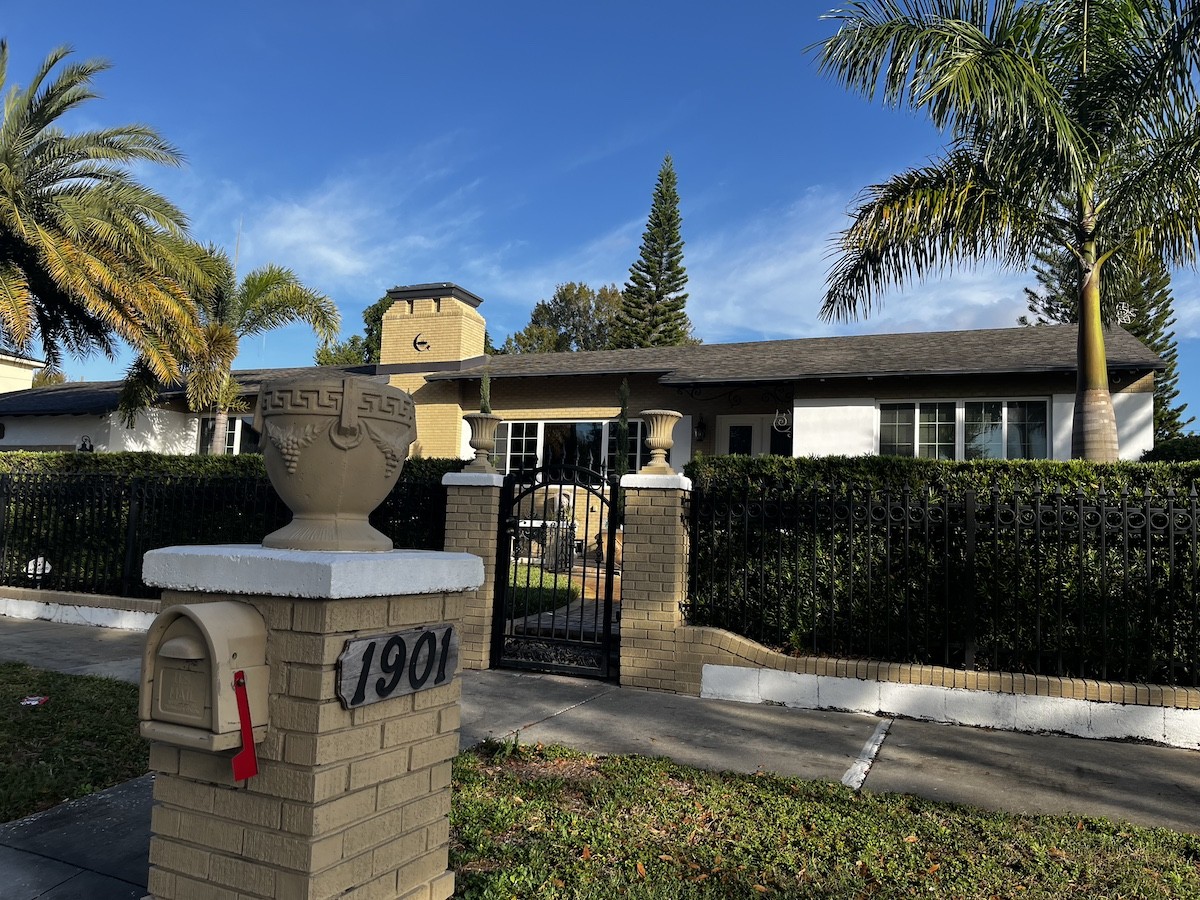
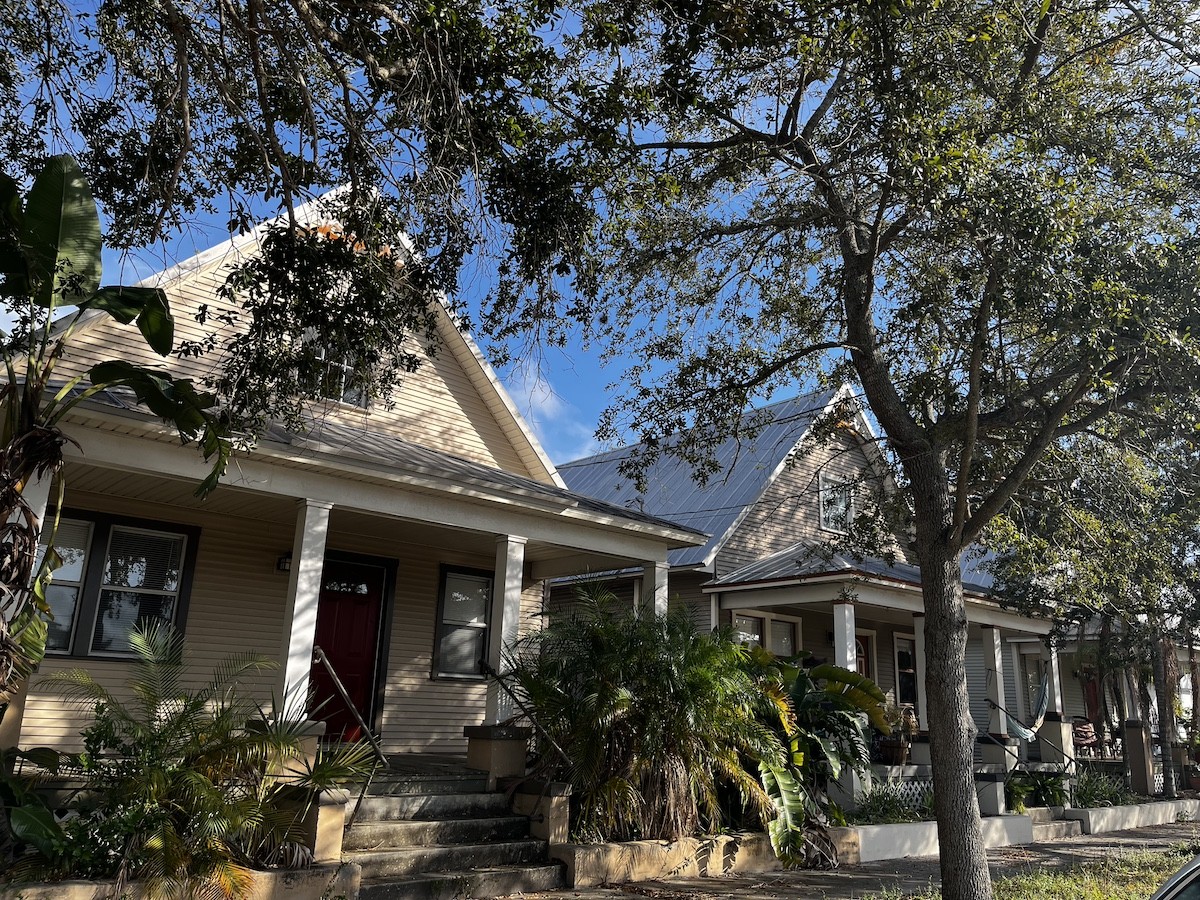
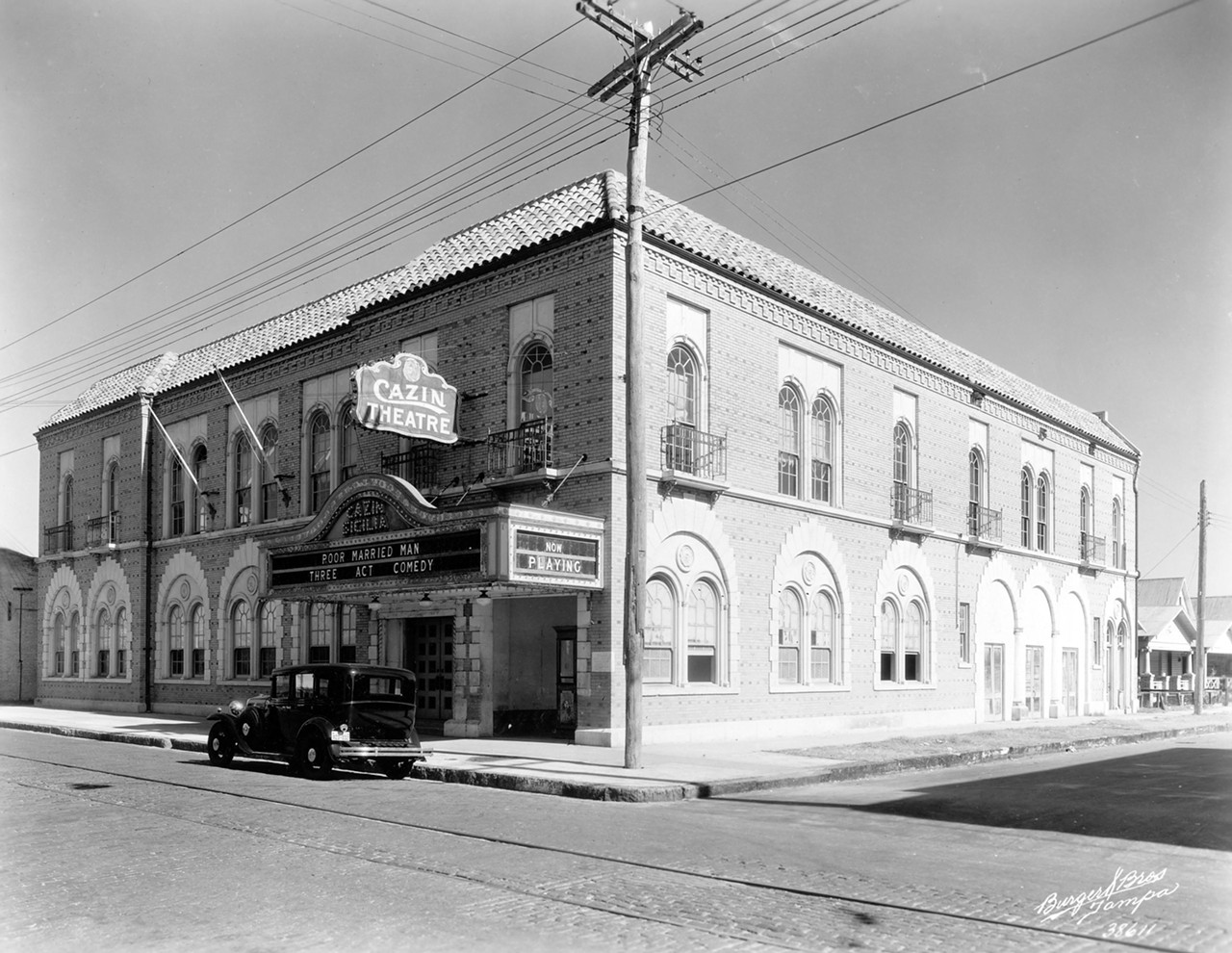
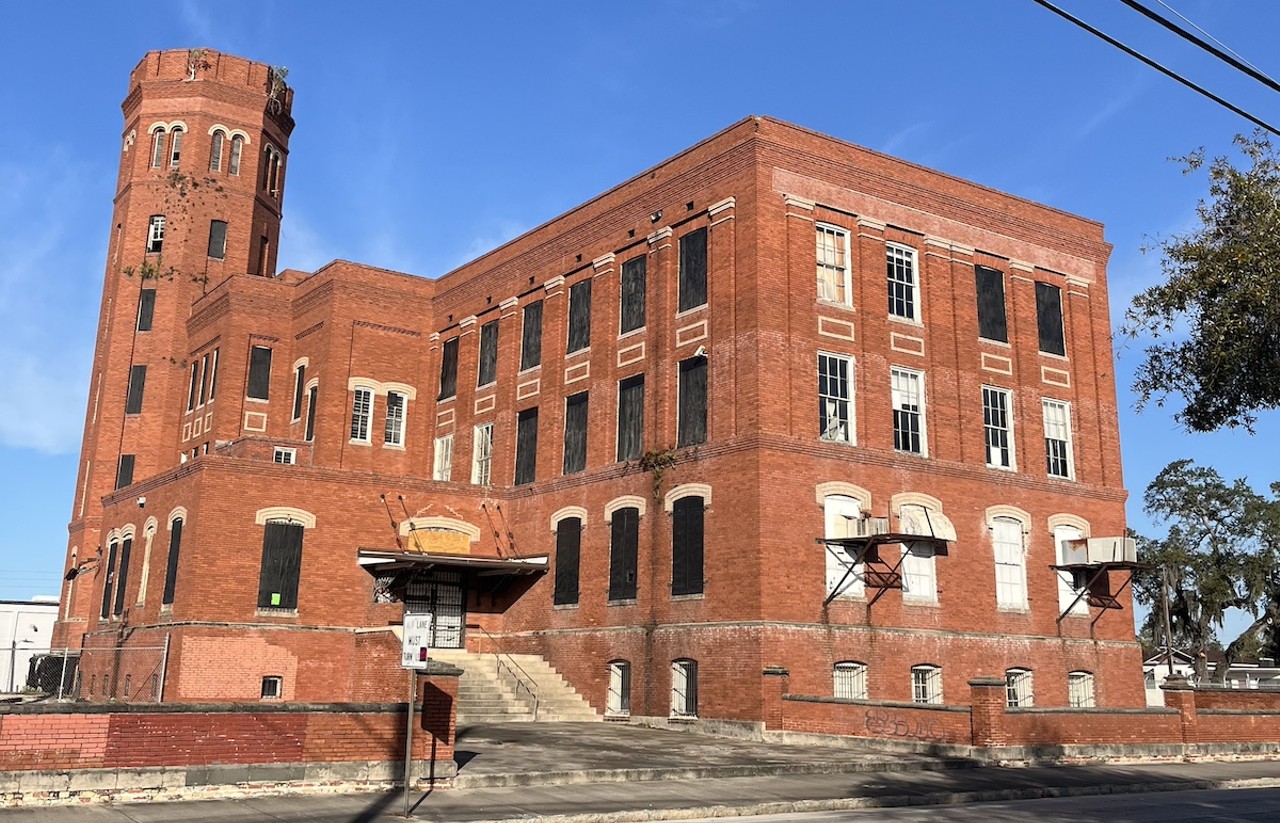
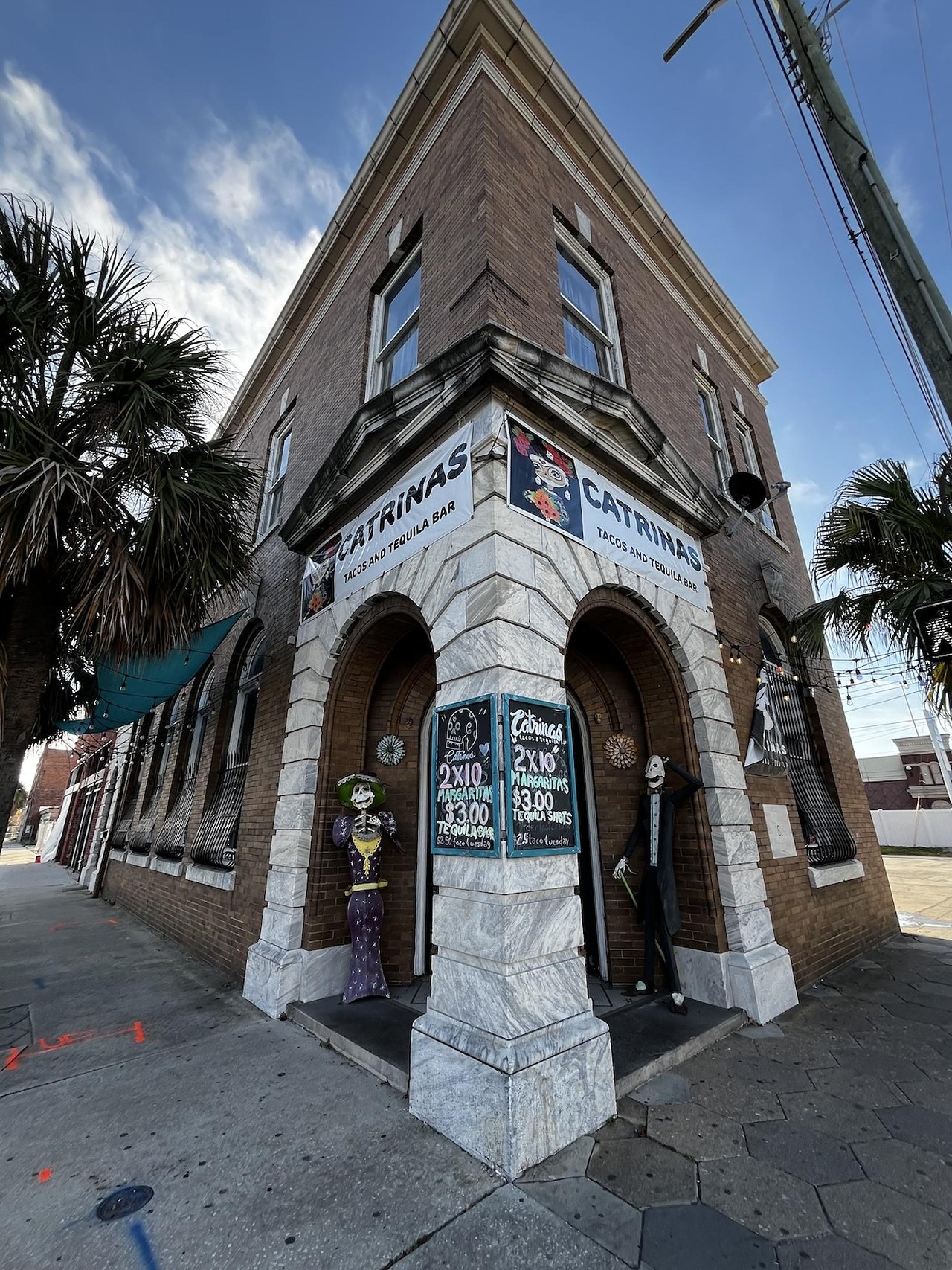
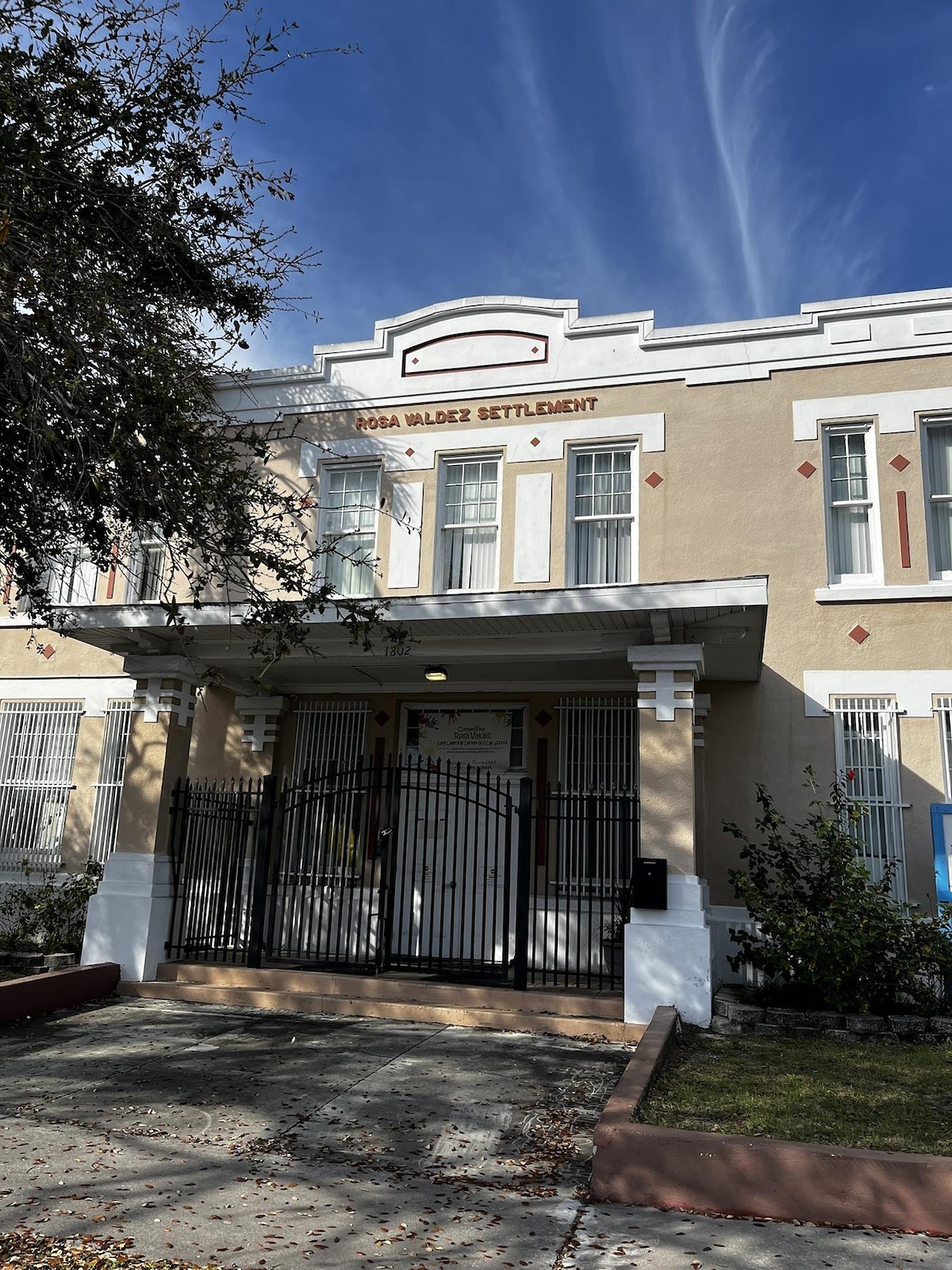
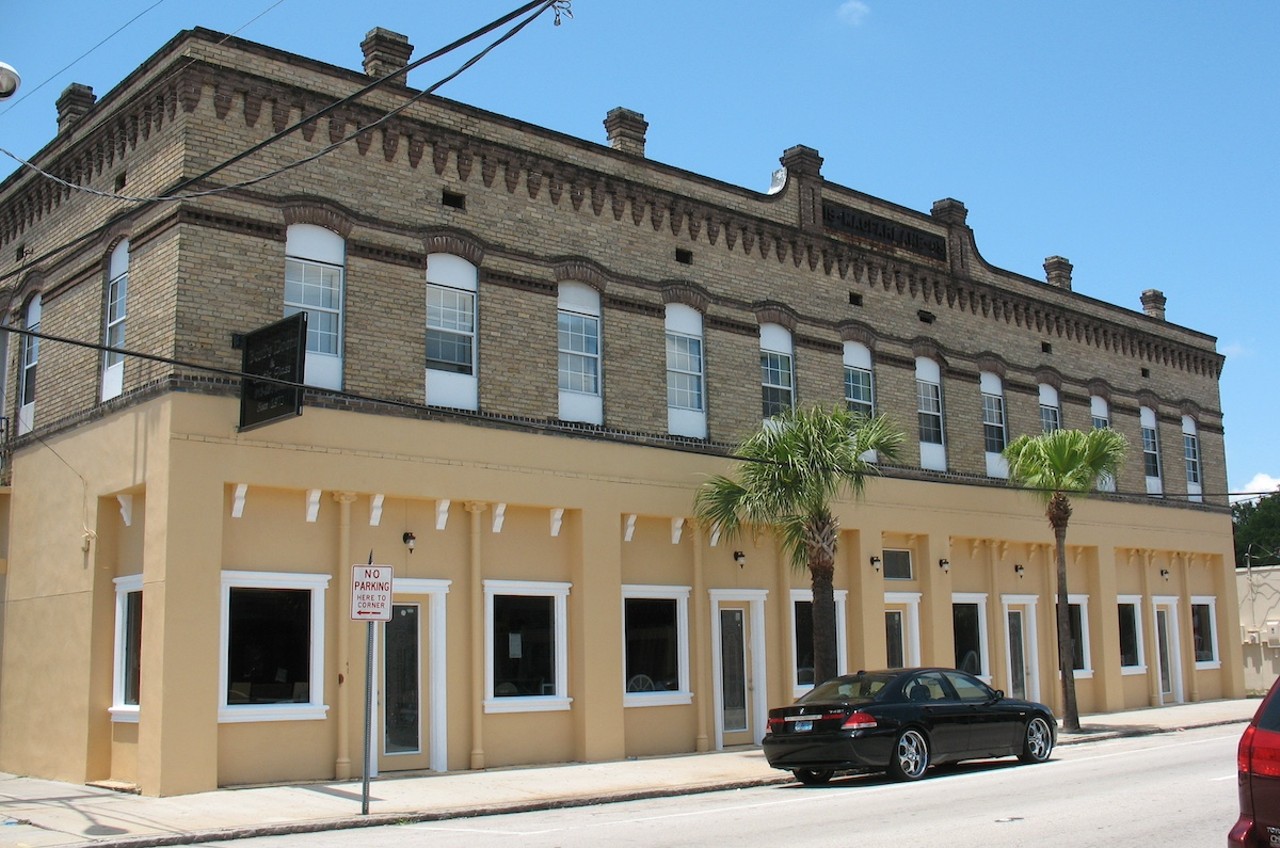
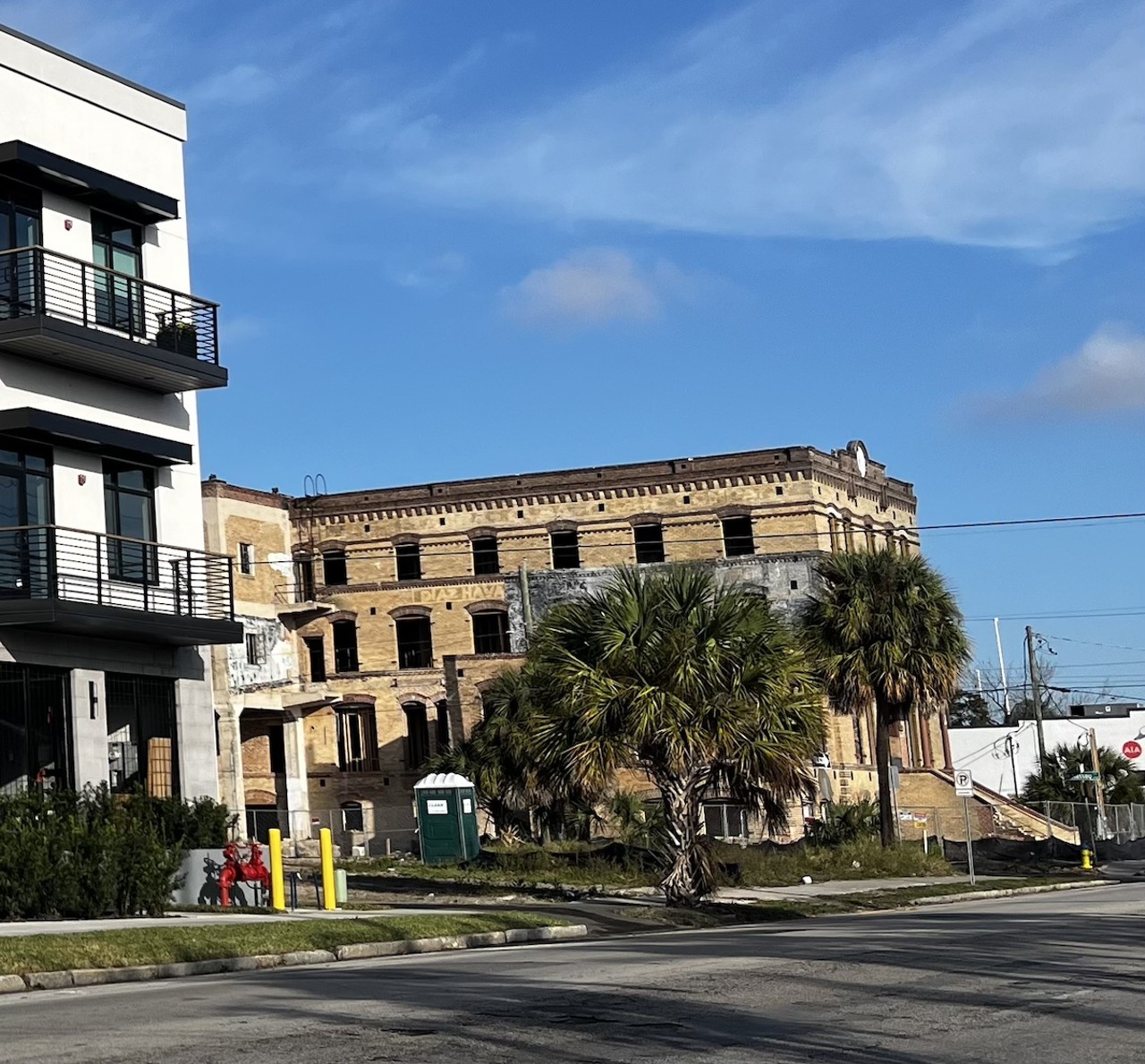
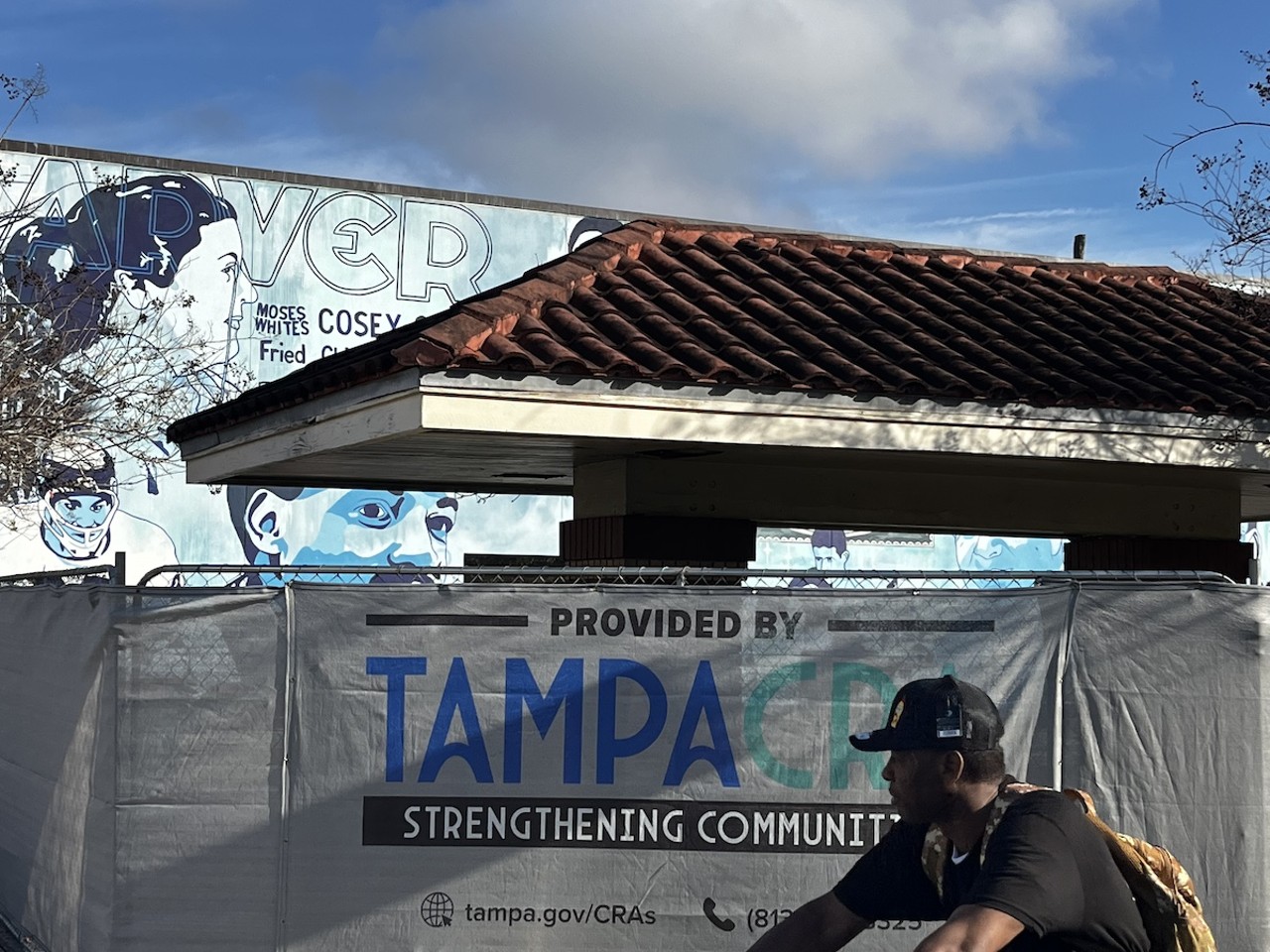
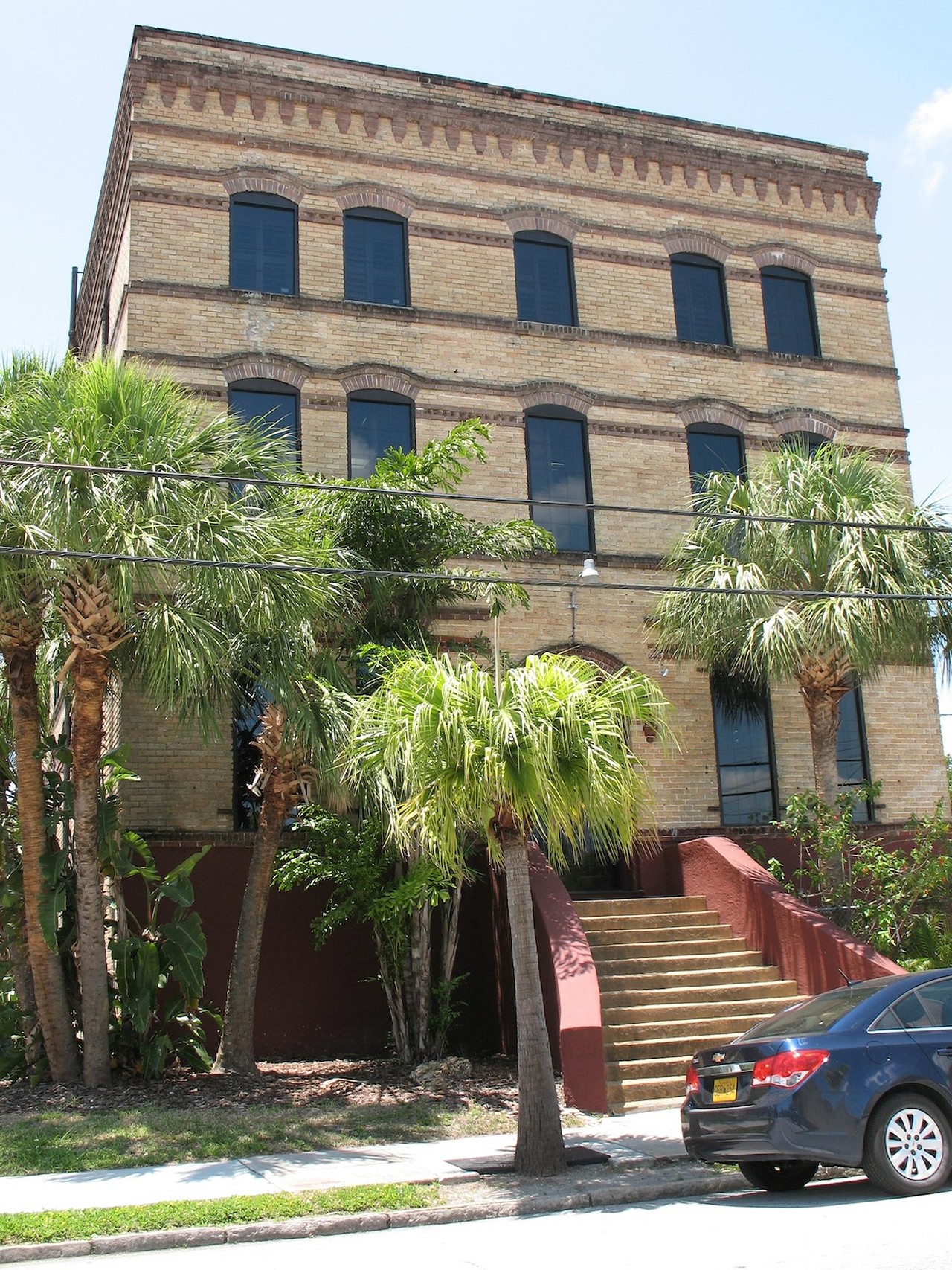
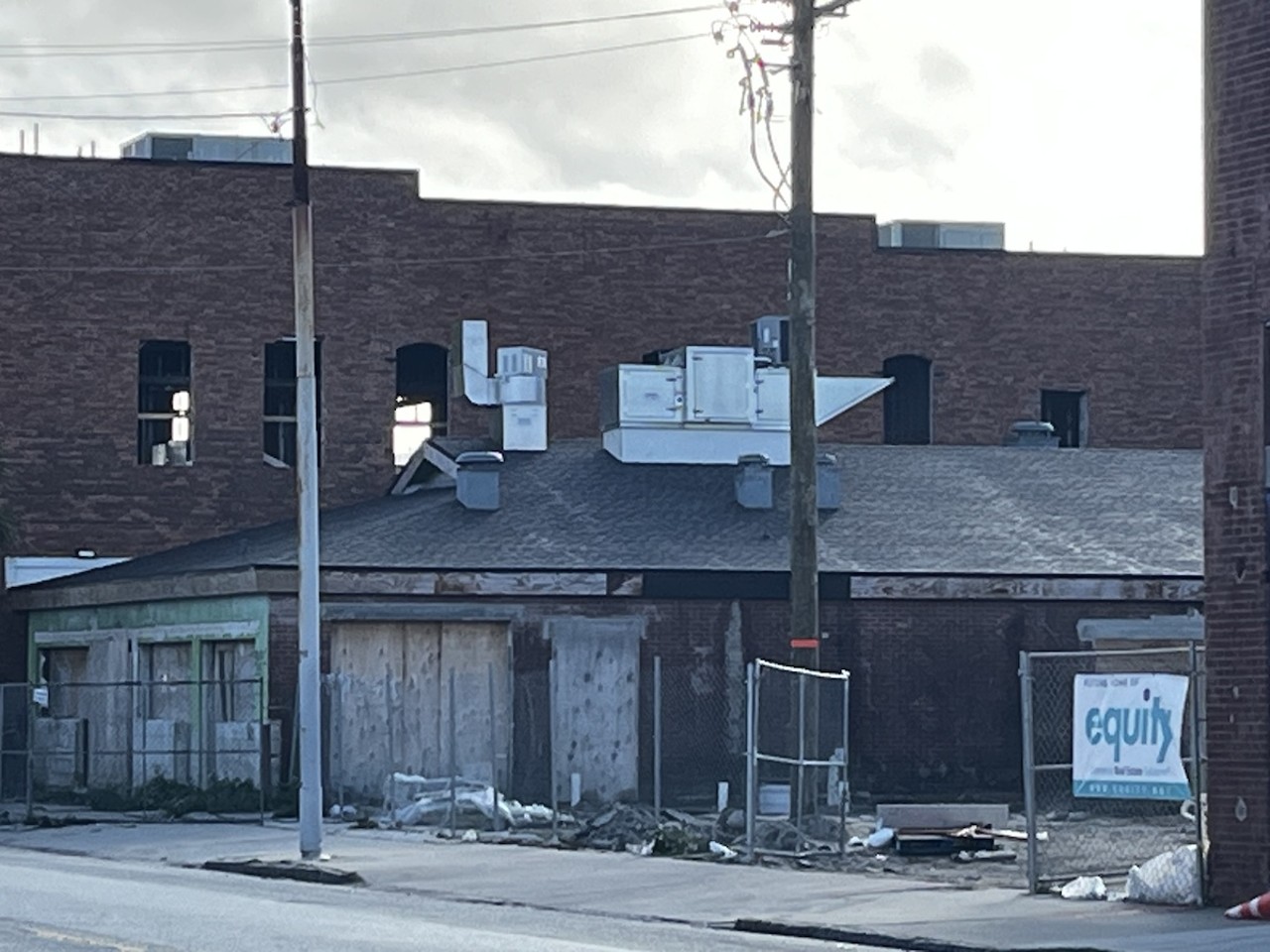
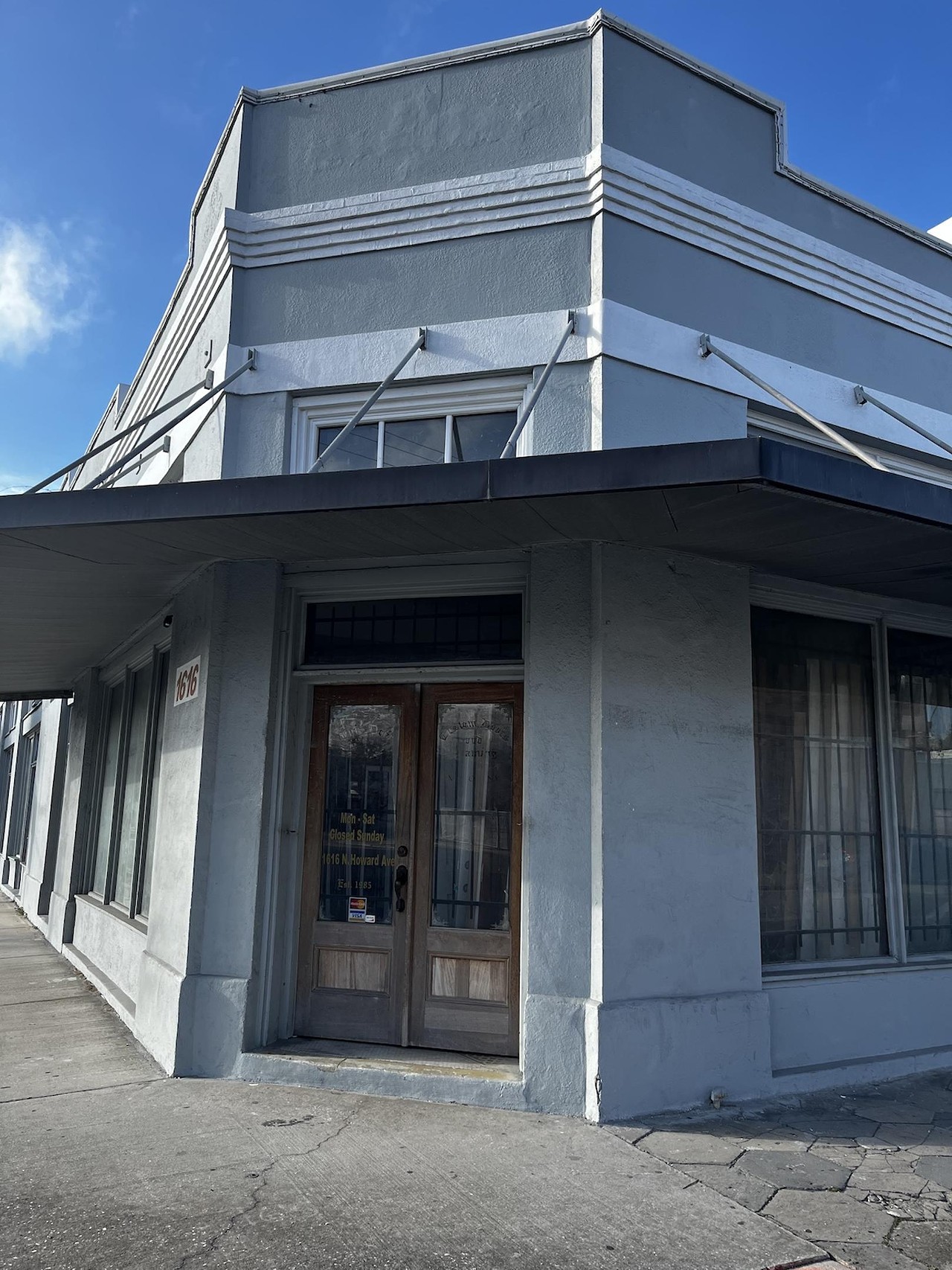
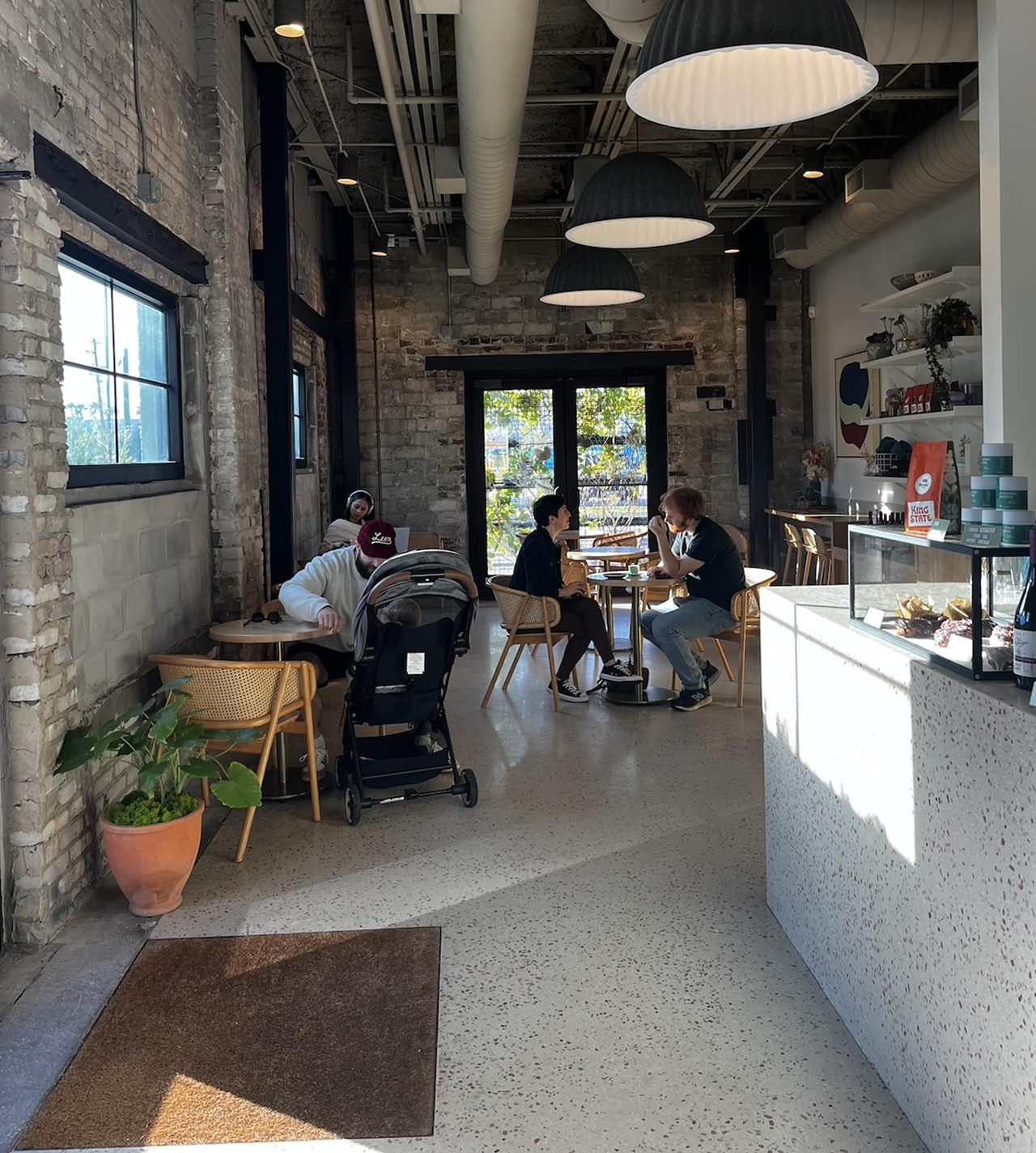
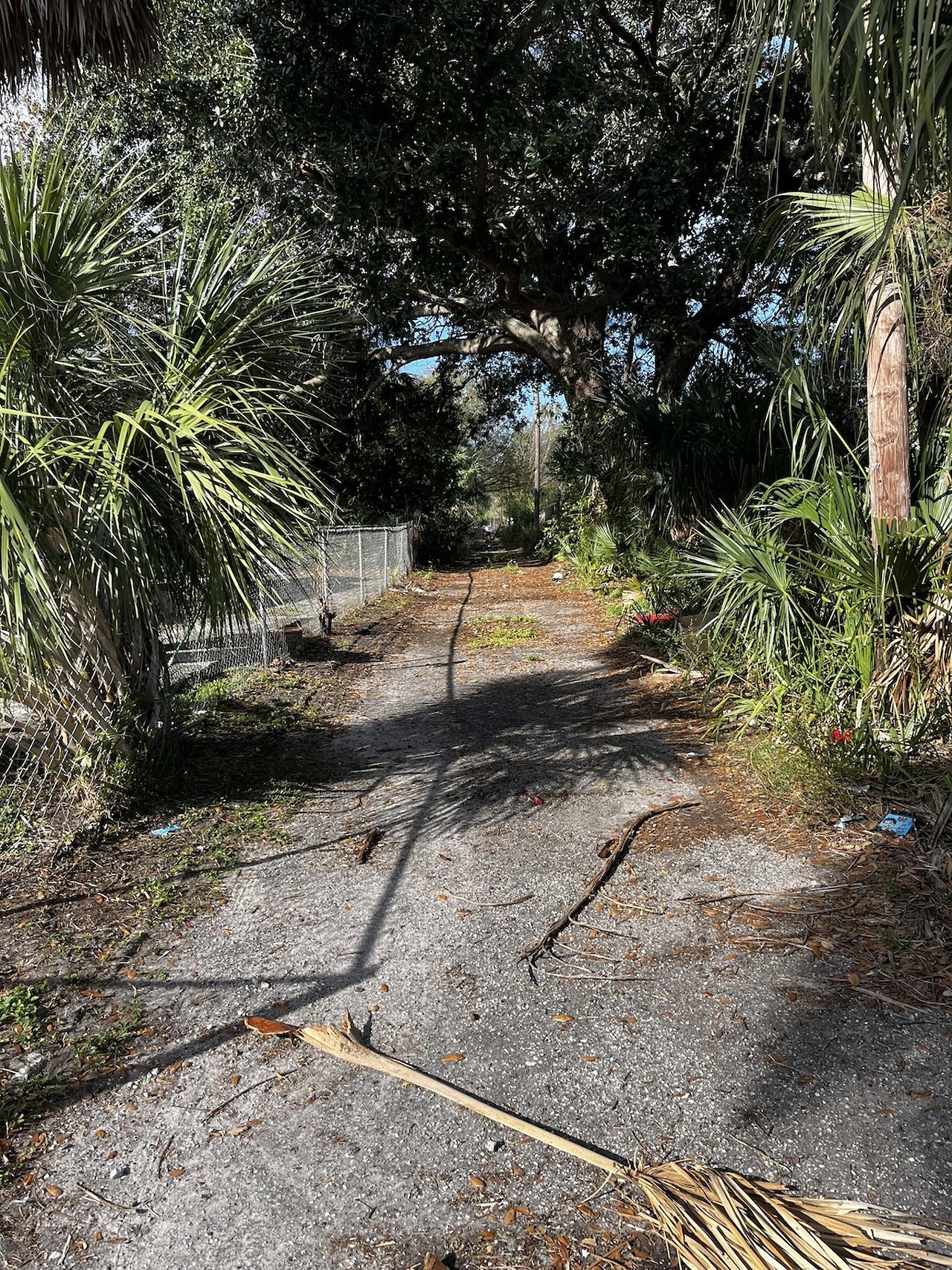
!['Protect West Tampa': The spirit of a quintessential Tampa neighborhood is on the line [COLUMN]](https://media2.cltampa.com/cltampa/imager/protect-west-tampa-the-spirit-of-a-quintessential-tampa-neighborhood-is-on-the-line-column/u/zoom/17180519/west_tampa_mural.jpeg?cb=1706803014)













